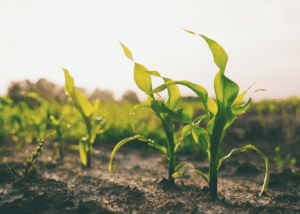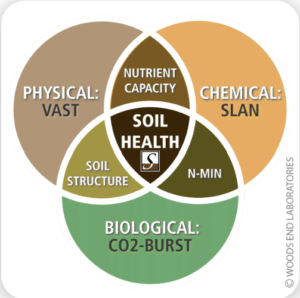Spring is in full swing, and farmers and agronomists alike are gearing up for a new growing season. With the warmer weather comes a renewed focus on optimizing soil health to maximize crop success. The foundation of any productive growing season begins with understanding the health of your soil—and the most effective way to gain that insight is through soil sampling and analysis.
Why Soil Testing Matters
Soil is more than just the ground beneath our feet; it’s a living, breathing ecosystem that directly influences plant health, growth, and productivity. Soil sampling provides a detailed picture of your soil’s current condition, offering valuable information about its nutrient content, moisture levels, pH balance, and other factors crucial for plant growth. By conducting regular soil tests, you’re not just guessing at what your crops need—you’re making informed, data-driven decisions that can significantly boost yield, improve crop quality, and optimize inputs like fertilizers and water.
As you prepare for the season ahead, here are a few key considerations to help you make the most of your soil management efforts:
1. Early Soil Assessment: Get Ahead of Potential Challenges
The earlier you assess your soil conditions, the better prepared you’ll be for the growing season. As soon as the weather permits, conduct a thorough assessment of your soil’s health. Look at key indicators like soil moisture levels, nutrient availability, and compaction. These factors can significantly influence crop establishment and growth, especially during critical early stages. For example, compacted soil can restrict root development, while inadequate moisture or nutrient levels can stunt growth from the start. Early soil assessment helps you spot potential challenges before they become major problems.
2. Strategic Soil Sampling: Precision Is Key
To get an accurate understanding of your soil’s overall condition, it’s important to take representative samples from different areas of your fields. Soil properties can vary dramatically across even small plots of land due to factors like topography, cropping history, and drainage patterns. A strategic soil sampling plan ensures that you capture this variability, giving you the most complete picture of your soil health. If you haven’t already, now is the perfect time to schedule your spring soil sampling and analysis.
3. Timely Nutrient Applications: A Tailored Approach
Once your soil analysis results are in, it’s time to develop a nutrient management plan. This step is crucial, as different crops have varying nutrient requirements throughout the growing season. Armed with your soil test data, you can create a customized plan that addresses nutrient deficiencies while also avoiding the over-application of fertilizers—saving you money and reducing environmental impact.
Consider both pre-plant nutrient applications and in-season top-dressing or fertigation (applying nutrients through irrigation) to ensure that your crops have access to the nutrients they need at the right times. Being proactive rather than reactive when it comes to nutrient management can mean the difference between a good harvest and a great one.
4. Building Long-Term Soil Health
While addressing immediate nutrient needs is important, it’s equally vital to think long-term. Practices like cover cropping, crop rotation, and reduced tillage not only improve soil health in the short term but also build a more resilient and sustainable farming system over time. These practices promote better soil structure, enhance microbial activity, and encourage efficient nutrient cycling—key components of a healthy, productive soil ecosystem.
Incorporating these strategies into your management plan can reduce soil erosion, increase organic matter content, and improve water retention. In short, healthier soil leads to healthier plants, which leads to higher yields and better quality crops.
5. Monitoring, Tissue Sampling, and Adaptation: Stay Flexible
Even with the best-laid plans, nature can be unpredictable. That’s why it’s important to continuously monitor soil conditions, crop health, and environmental factors throughout the growing season. One effective way to stay on top of your crop’s nutrient status is through **tissue sampling**. While soil testing provides an overview of nutrient availability in the soil, tissue sampling offers real-time data on the nutrients actually being absorbed by your plants. This method helps you identify any hidden deficiencies or imbalances that could affect plant growth before they become visible.
By combining regular tissue sampling with ongoing soil monitoring, you can make timely adjustments to your nutrient management plan. For example, if a tissue analysis shows your plants are low on a particular nutrient mid-season, you can quickly address the issue with targeted foliar feeding or nutrient applications. This proactive approach ensures that your crops have access to the nutrients they need when they need them, optimizing their performance throughout the growing season.
In addition to monitoring nutrients, keep a close watch on soil moisture levels, pest pressures, and environmental conditions. Flexibility and continuous observation will help you adapt to any challenges and maximize crop productivity. Whether that means tweaking your irrigation schedules, adding supplemental nutrients, or mitigating stress from pests or diseases, staying responsive to your plants’ needs is key to a successful harvest.
Learn from the Experts
To further enhance your understanding of soil management, Deveron’s lab partner, A&L Canada Laboratories Inc., has produced a series of informative YouTube videos. These resources cover essential topics like how to interpret your soil test results, tips for efficient soil sampling, and the overall importance of regular soil testing. Whether you’re a seasoned farmer or new to soil health, these videos offer practical advice to help you optimize your crop success.
How to interpret your soil test results
Soil Sampling Tips
Why soil test?
Conclusion
Optimizing soil health is an ongoing process, and it starts with a deep understanding of your soil’s unique characteristics. By conducting early assessments, implementing strategic sampling plans, and applying nutrients based on accurate data, you can set your crops up for a successful season. Adding tissue sampling to your monitoring practices further fine-tunes your management strategy by giving you real-time insights into plant health. And by integrating long-term soil health practices into your management strategy, you’ll be building a foundation for sustained productivity for years to come.
Learn With Us

Optimizing Corn Yields with Nitrate and Tissue Testing
As corn enters its most critical growth stages, nitrogen management becomes a key driver of yield potential. Applying the right

What Your Soil Isn’t Telling You: The Power of Pairing Respiration with Organic Nitrogen
Spring is in full swing, and farmers and agronomists alike are gearing up for a new growing season. With the

5 Ways to Prepare for a Productive Growing Season
Spring is in full swing, and farmers and agronomists alike are gearing up for a new growing season. With the